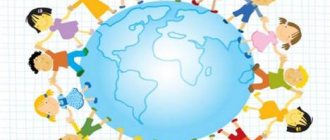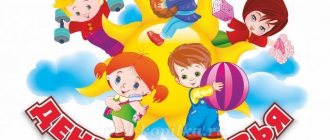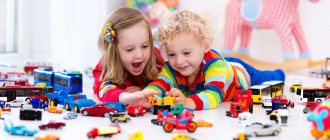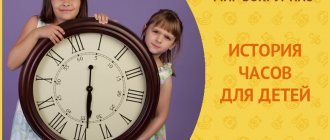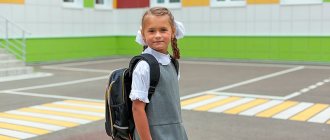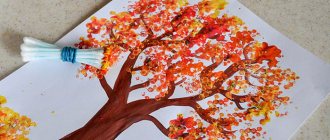Useful materials in this section will be useful to you for preparing and conducting events about healthy lifestyle at school. Whether it’s extra-curricular and extracurricular activities, “health lessons” or class hours dedicated to a healthy lifestyle...
To organize any of these events, there are ready-made notes, scripts, plans, programs, and explanatory notes. A large number of publications presented on these pages are devoted to the prevention of bad habits among schoolchildren - smoking, drinking alcohol and drugs. Please also pay attention to the materials dedicated to World Health Day on April 7 at school.
Healthy lifestyle: lesson notes, extracurricular activities
Contained in sections:
- Extracurricular activities. Extracurricular activities at school 2447
Includes sections:
- Cleanliness, hygiene. Lessons and extracurricular activities 21
Showing publications 1-10 of 411. All sections | Healthy lifestyle at school. Health lessons, extracurricular and classroom hours
New
Photo
The best
Memo for parents on the prevention of bad habits in children and adolescents Reasons for the use of alcohol (energy drinks, drugs and tobacco) by children and adolescents: • The desire to keep up with the company. • The desire to disconnect from troubles. • Curiosity. • Abuse of a teenager in the family. • Insolvency. in studies • Emotional…
Research work of a 9th grade student at a boarding school for students with disabilities “Healthy Nutrition” of the KOU VO “Krasnyanskaya boarding school for students with disabilities”
Research work on the topic
“
Healthy eating ” .
grade student Oksana Suntsova Supervisor Antipova Irina Yurisovna social teacher 2022 Introduction In modern times, pediatricians often have to...
Healthy lifestyle lesson “The ABCs of Health”
- January 28, 2011
Competition “My Pedagogical Initiative” – Stage 2
Goal: Updating and expanding the knowledge of junior schoolchildren about ways to maintain their health.
Tasks:
- to attract the attention of schoolchildren to the problem of health;
- point out the negative impact of the disease on a person’s life;
- introduce the effect of viruses on the body;
- introduce ways to strengthen the immune system.
Progress of the lesson
Teacher:
Early in the morning, someone strange looked through my window, A bright red spot appeared on my palm.
Who do you guys think it could be? (slide No. 2)
This sun looked in, It was as if a ray of light was reaching out, A thin golden ray. And like with your first best friend, he greeted me.
The sun greets each of us with warmth and a smile. Gives a good mood. And I want to wish you that every day brings you only joy (give your children sunshine).
"Good afternoon! Good morning! Good health!”
When we say these words, we sincerely wish those we meet goodness and joy. And our heart opens to sincere and kind people.
Teacher: Aibolit’s assistants, Masha and Dasha, came to visit us today. They know how to be healthy and will share their knowledge with us. (Slide 3)
3. Guys, what does a person need to always be in a good mood and in good shape? (health)
What kind of person can be called healthy? (Slide No. 4)
A healthy person rarely thinks about what health is. Meanwhile, health is one of the main values of human life, a source of joy. Everyone from a young age should take care of their health, have knowledge about hygiene, first aid, and how not to harm their body.
4. And if a person is unwell, what consequences await him? Poor health and illness cause stunting, poor academic performance, and bad mood. What can cause the disease? (Children's answers) (Slide No. 5)
5. How do microbes enter the body? (Children's answers: if a person does not cover his mouth and nose when sneezing or coughing (germs fly 10 meters); does not wash his hands before eating, uses other people's things; does not wash vegetables and fruits; does not temper himself, etc.)
6. Masha: The nose is not breathing, the body is aching, the cough is suffocating every now and then, the head hurts and the ears hurt, and toys and meringue cake are not pleasing.
Dasha:
We were overcome by a cold called acute respiratory infection. And the weeks fly and fly, Well, we lie in bed, Because, unfortunately, a complication has appeared.
Masha:
There is noise in the heart, pain in the joints, Here you will cry involuntarily.
Teacher: Disease is a violation of the integrity of the body, the loss of the ability to resist its external and internal enemies. The disease is usually accompanied by fever. Pain in various organs, weakness, loss of appetite. A sick person is in a bad mood and doesn’t want to do anything.
7. Dasha: What is acute respiratory infection? (Slide No. 6) Apparently, not everyone knows.
Masha: In our world there is a kingdom,
Its inhabitants are countless: On earth, here and there, they are called Viruses. And dangerous, and insidious, And they are invisible.
Dasha: Who is at war with the virus, Who guards health Day after day and does not sleep at night?
Masha: Just imagine, our body is a whole country. It consists of cells. Cells are cities. Every city is guarded by a blood cell - a lymphocyte.
Dasha: Our body is very complex, we need to be careful with it. If you have been lazy since childhood, eat a lot, are sleepy all day, rarely do exercises, your body is not in order. Your lymphocyte is barely alive: Half asleep and sick.
Masha: A terrible virus enters the cell and bypasses all possessions. He sees that everyone here is sleeping peacefully, You can build viruses - Hundreds of thousands, a million. Here he is again strong! Gathers his army, begins to fight.
Teacher:
To protect yourself from viruses, it is necessary to strengthen the body’s defenses – its immunity.
8. Game "Immunity".
In order for immunity to be good, lymphocytes must guard the body's cells and keep viruses out. Participants are divided into two equal teams: viruses and lymphocytes. Each team stands opposite the other, and all participants firmly hold hands. One person from the virus team must run wildly and break the hands of any two people from the lymphocyte team. If he succeeds, then he enters the cell, taking a player from the enemy team, if not, then he remains in the lymphocyte team. The team with the most people at the end of the game wins.
10. Teacher: What should you do to strengthen your immune system?
Dasha: Maintain hygiene, don’t forget about the regime. Temper yourself, get wet, you need to eat right.
11. Arrange routine moments on the board in order: lunch, exercise, getting up, dinner, get dressed, wash, free time, breakfast, dinner, school, sleep, walk, make the bed, getting ready for bed. (Slide No. 7)
| 1 rise | 9 |
| 2 | 10 |
| 3 | 11 |
| 4 | 12 |
| 5 | 13 |
| 6 | 14 |
| 7 | 15 |
| 8 | 16 |
11. Masha: In order to maintain health, to strengthen your body, my whole family knows there must be a daily routine.
Dasha: Guys, you should know. Everyone needs to sleep longer. Well, don’t be lazy in the morning - get ready to exercise!
Masha: Brush your teeth, wash your face, and smile more often, toughen up, and then you won’t be afraid of the blues.
12. Teacher: To strengthen your immune system, you need to eat healthy foods and drink clean water. Name healthy foods that you should eat daily. (dairy products, vegetables, fresh and dried fruits, nuts, bread, vegetable oil, fish, lean meat) (Slide No. 8)
Name foods that are unhealthy (fatty meat, cake, chocolates, smoked fish, Pepsi-Cola, chips,...) (Slide No. 9)
Name the rules of nutrition.
13. Game “The most attentive”.
Guys, I will name vegetables. If we eat the underground parts of these products, we need to sit down, if we eat the above-ground parts, we need to stand up to our full height and raise our arms up.
Potatoes, beans, carrots, tomatoes, beets, turnips, cucumbers, garlic...
14. Dasha: So that not a single microbe accidentally gets into your mouth, wash your hands before eating with soap and water.
Masha: Eat vegetables and fruits, fish, dairy products - This is healthy food, full of vitamins! Dasha: Go for a walk, breathe some fresh air. Just remember when leaving: Dress for the weather!
15. Teacher. It is necessary to follow the “Rules of Personal Hygiene” and then you will be healthy. Personal – that is, each person follows these rules. Hygiene is those actions that help keep your body, clothes and home clean.
Guys, it is important to keep your hands clean. You take various objects with your hands: pencils, pens, books, notebooks, etc., grab door handles, touch various objects in the toilet rooms.
All of these items have dirt on them, often invisible to the eye. With unwashed hands, this dirt first enters the mouth and then into the body. Dirt transmits various diseases from a sick person to a healthy one. (Slide No. 10)
16. Game “Helpful and Harmful”
There are cards with words on the table (vegetables and fruits, good sleep, watch TV close, exercise, chew hard things, don’t wash your hands, lie on your desk, always dress neatly,..) (Slide No. 11)
Drawing up rules for each card (eat right, go to bed on time, take care of your eyes, play sports, brush your teeth morning and evening, be friendly with water, watch your posture, take care of your appearance).
17. Masha: Well, if it already happened: You got sick, Know that it’s time for you to see a doctor. He will always help us! Dasha: These are the good tips, The secrets are hidden in them, How to maintain health. Learn to appreciate it!
Teacher: So, today in class we learned what a disease is, what helps our body protect itself from it and how to strengthen the immune system, how to take care of our own health. After all, no one will do it better than you yourself. (Slide 12)
Author: Lisenkova Tatyana Georgievna, additional education teacher of the 1st qualification category of the Municipal Educational Institution of DDT in the village of Kyshtovka, Novosibirsk region, work experience - 8 years. Hobbies: healthy lifestyle, reading books, computer. Photo by Lisenkova2009
Presentation “The ABC of Health”
Card index of games and exercises “Me and my health”
Both teachers and parents are concerned about the problem of children's health. It is important to develop in a child the right attitude towards his health and healthy lifestyle skills. The games and exercises that are offered contribute to the development of a conscious attitude towards a healthy lifestyle.
How to take care of yourself
- "Introduction to wash supplies."
The teacher offers to name the objects depicted and explain why each of them is needed.
- "I wash my face".
The adult offers to show and name the items that are needed for washing.
- "I am taking a shower".
The adult offers to show and name the objects that are needed in order to take a shower.
- "Do you know?"
The child answers the questions.
How often should you wash? How often should you brush your teeth? How often should you trim your nails? Wash your ears? Change underwear? (Goal: To increase the child's awareness of self-care.)
- “It’s possible - it’s not possible.”
If this can be done, children clap their hands; if this is not possible, they hide their hands behind their backs. For example, the teacher says: “Natasha once didn’t find her towel and dried herself with someone else’s.” - No, she didn’t wipe herself with someone else’s, but took a clean rag. – Natasha took a walk, came home, had dinner, but did not wash her face. “She lay down in the same clothes she wore on the street.” “In the morning, Natasha got up, washed her face, brushed her teeth, went to the toilet and sat down to have breakfast.
- “Who is more observant?”
Children answer questions.
Have you observed animals? How do they wash themselves? How do you take care of yourself? What do animals eat? What herbivores do you know? What predatory animals do you know? The teacher talks about how animals eat what they are supposed to eat, what is healthy. Some animals eat plant foods, others eat meat. The first are called herbivores, the others - predators. Some predators (bears) eat both meat and plant foods. (Goal: development of observation skills in children, familiarization with the habits of animals.)
- “What is good for children?”
- Children name the products shown in the picture. They tell you what they love most.
- The teacher distributes three circles (signals) to the children: red, yellow, green. An adult names one of the products. Children should raise a red signal if a product is named that is not healthy, although it is tasty (for example, cake, caramel). Children should raise the yellow signal if we are talking about products that are not healthy, but also do not harm the body (semolina, white bread), the quantity of these products should be limited. Children should raise the green signal if a product is called healthy (fruits, vegetables, fish).
Why do I hear
- "We're checking our hearing."
An adult pronounces words in a whisper. If the child heard, raises his hand and then says the word.
- "Guess the melody".
An adult offers to listen to the melody of a children's song and name it.
- "The influence of noise on hearing acuity."
The teacher says the word. The children repeat it. Then, at a signal, they begin to shout and make noise (3-5 seconds), at which time the teacher pronounces another word in a normal voice. After silence is restored, he asks what word was named during the noise. (It turns out that no one heard him.)
- "Far close".
- The child is blindfolded. An adult or another child throws a pebble. You need to guess where it fell, far or close.
- Different sounds are produced at different distances. The child determines whether it is far or close.
- “Set a direction.”
Children stand in a circle, with a blindfolded child in the middle. The child, whom the teacher is pointing at, makes some sound (squeaks, whistles, coughs, calls by name, claps). The introducer shows with his hand in which direction the sound came.
- "Recognize by voice."
The driver is blindfolded. Another child, at the direction of an adult, calls by name. Then the game gets more difficult.
Why do I see
- "Mirror".
The child takes a mirror, looks into it and answers the question “What do you see in the mirror?”
- "Blind Man's Bluff."
Blindfold the child's eyes. Blindfolded, he must catch one of the children who is trying to escape. (This game allows every child to understand how difficult it is to live without seeing anything.)
- “Is it possible to do without eyes?”
Children stand scattered or soft modules are placed. The child is blindfolded. The child must walk around the room without bumping into friends (objects). (The child stumbles upon them, even if he remembers the location.)
- “What I see with one eye.”
The child closes one eye and looks around without turning his head. Then, opening it, he closes the other eye. He talks about what he saw.
How do I recognize smells?
- "Recognize the smell."
An adult opens a bottle of perfume, invites the child to smell it (take a deep breath through the nose), and asks questions. What smell did you smell? Did you like the smell or not?
- "Guess the products."
The child can guess by smell, taste and touch an apple, carrot, garlic, onion, pickled cucumber, etc.
- "What's that smell".
Objects with a distinct smell are placed in a kinder surprise with drilled holes. (Garlic, onions, coffee beans, cotton wool soaked in perfume, geranium leaf, lemon, etc.) Children determine what kind of smell they smelled.
How we breathe and why
- "Game with cotton wool."
One half of the nose is pressed with the index finger of the hand, and a cotton swab is applied to the other half of the nose. Ask the child to inhale and exhale. If the cotton wool moves well, then nasal breathing is preserved. Lack of movement indicates the presence of rhinitis, adenoids or polyps. (This game will help demonstrate whether children have normal or difficult nasal breathing.)
- "I exhale water."
Give the child a mirror, ask him to inhale and exhale directly into the mirror. Draw the child's attention to the fact that the mirror is fogged up. Ask your child to run his finger across the mirror.
- "Let's check the strength of breathing."
An adult places a light feather (a small piece of paper crumpled into a ball) on the children’s palms. Children bring their palm to their mouth and blow with all their might.
- "Air football"
Two or four tables move. Children are divided into two teams (or two children play, or an adult and a child). The first team is placed on one side of the table, the second on the other. The junction of the tables is the boundary of the field. A table tennis ball is placed in the center of the tables. Children blow on it through a cocktail straw, trying to keep the ball on the opponent's side. The task can be complicated by offering to score a goal against the opponents.
- "Ships" (No. 1).
Water is poured into a wide basin. Boats are launching into the water. Children blow on them through a cocktail straw.
- "Ships" (No. 2).
The boats are made from plastic liners found in candy boxes. Such boats glide easily across the table surface.
Why does a person need hands?
- “What are hands needed for?”
- The adult invites the children to turn the pages of the book without their hands, then with their hands.
- An adult offers to sort through the cereal lying on a plate without using your hands. Then he suggests doing it with your hands.
- “How are hands similar and how are they different?”
The adult offers to put both hands on the table and answer the questions. How many hands does a person have? How are the hands similar? How are both hands different from each other?
- “Do the hands work equally well?”
The teacher suggests taking a pencil in your right hand and drawing a sun. Then draw a sun with your left hand. The adult offers to take the scissors with his right hand and cut out the sun that was drawn earlier. He suggests doing the same with your left hand.
- “We won’t tell you where we were, but we’ll show you what we did.”
Children are divided into two teams. One team thinks of an action and shows it with their hands. The other team guesses.
- “How are arms and legs similar?”
An adult shows parts of his hands on himself, and children show the same parts on their legs. (An adult names all parts of a limb without a specific sequence, for example, fingers are shown first, then shoulder, nail, thumb, index finger, forearm, little finger, middle finger, palm...)
- “What is better to do with your feet and what with your hands.”
The teacher suggests taking the pencil with your hands. Then he offers to take it with his feet. An adult suggests drawing the sun with your hand, then with your foot. Other tasks: throwing and catching a ball; walking on hands and feet; jumping on arms, legs; collect sticks, toys; drink water from a mug; pick beans from a saucer...
- “Name and show the methods of movement of animals.”
Children name and show in what ways animals can move. (They run, jump, walk, swim, crawl, fly...)
- “Show how a person can move.”
Children show in what ways a person can move. (Regular movements, dance steps, physical exercises...)
